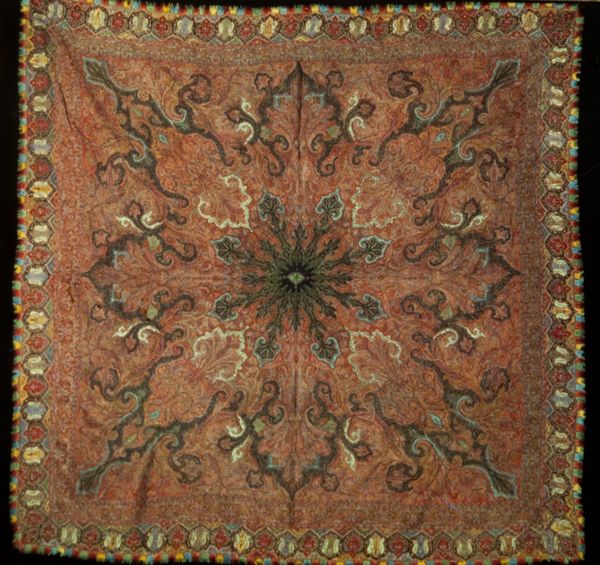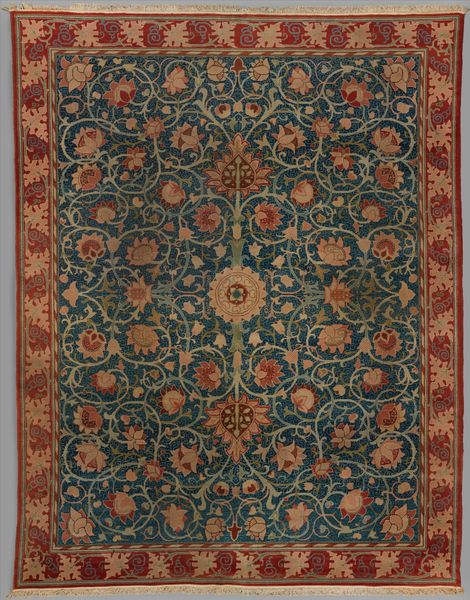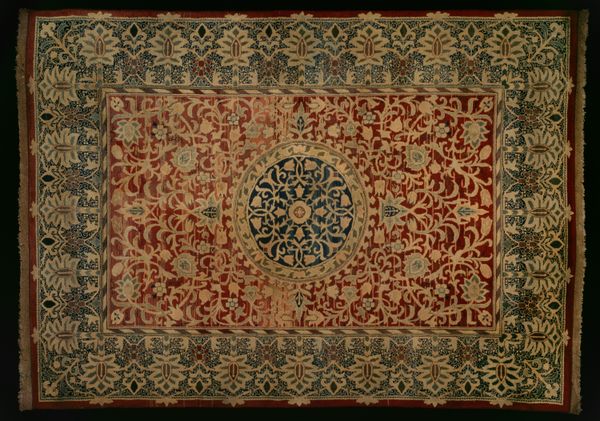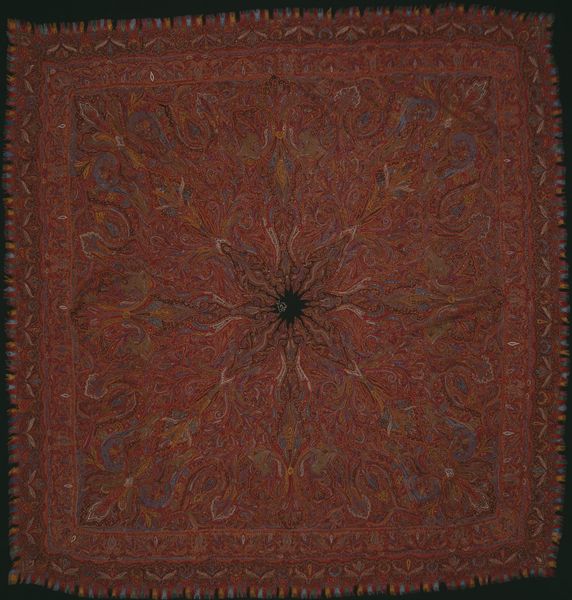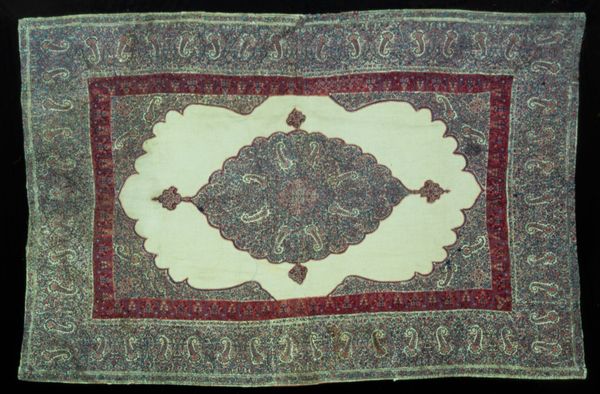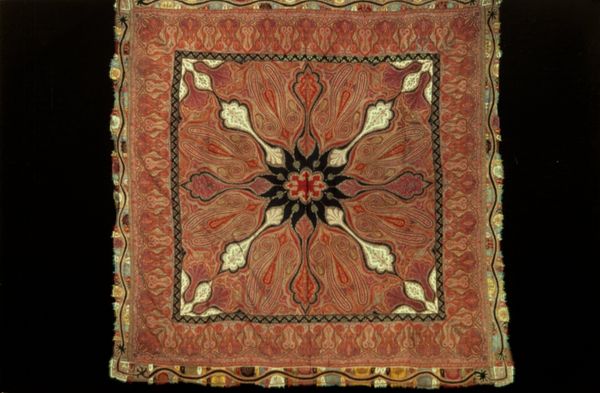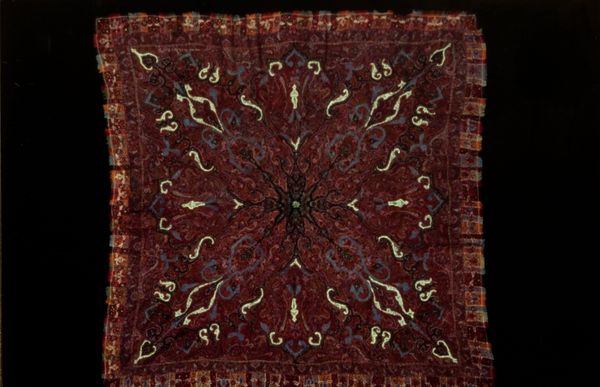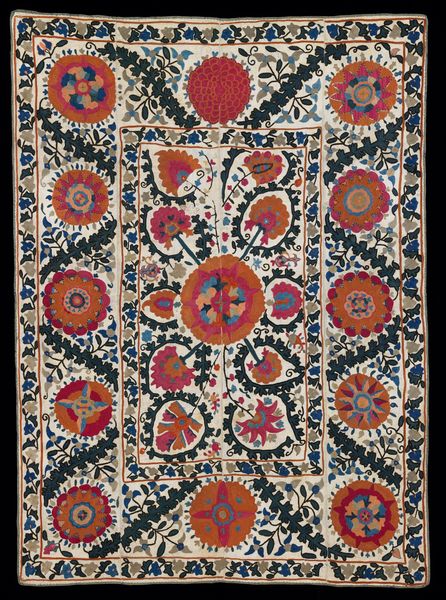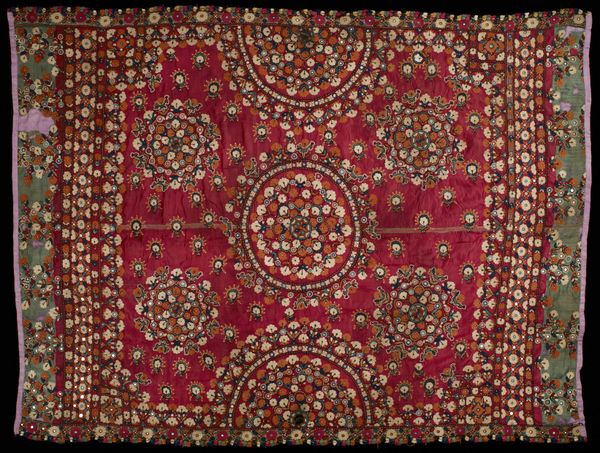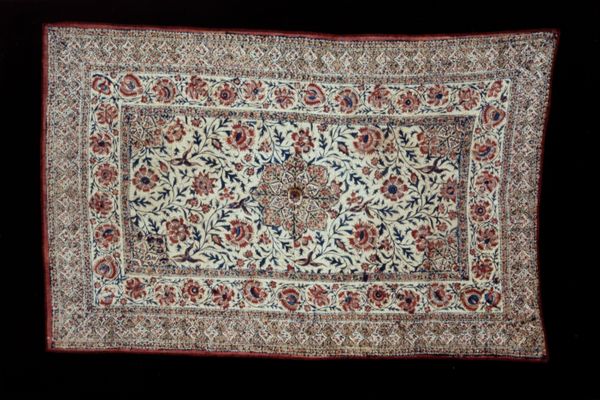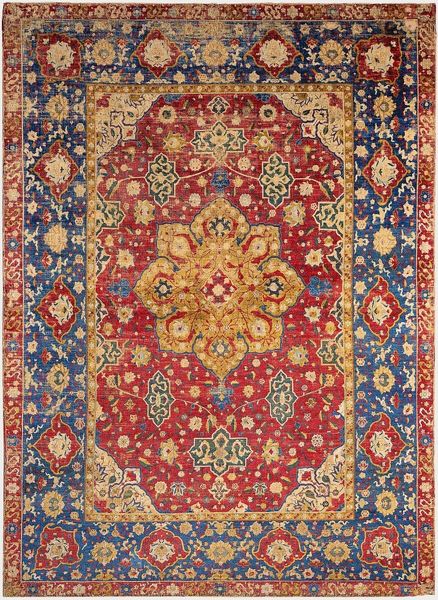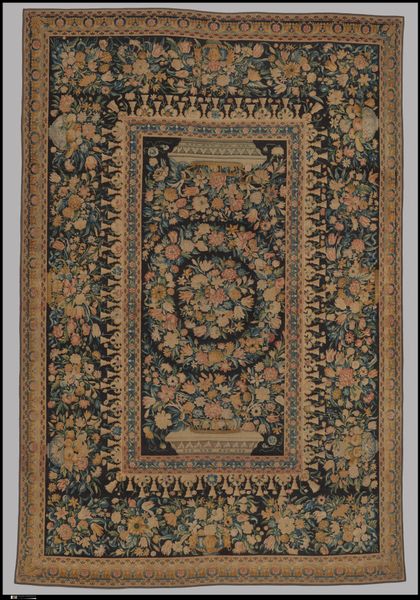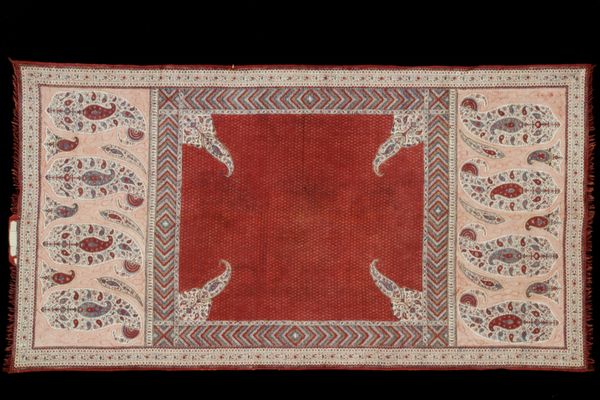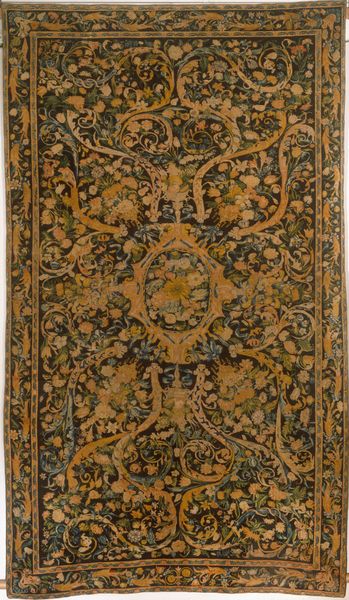
mixed-media, textile
#
mixed-media
#
organic
#
textile
#
organic pattern
#
orientalism
#
islamic-art
#
decorative-art
Copyright: Public Domain
Curator: Let's discuss "Kussaba," an intriguing mixed-media textile piece from around the 19th century, currently residing here at the Minneapolis Institute of Art. What strikes you immediately about this work? Editor: A certain intensity—the intricate patterns, the tight composition, and warm, earthy palette combine for something both mesmerizing and a little claustrophobic. It almost feels as though the design is endlessly multiplying itself across the surface. Curator: Precisely. Given its age and presumed origin, it’s interesting to consider how and by whom this textile was produced. Were these complex patterns the work of a single weaver, or a collaborative effort within a workshop? What was the socio-economic context for its creation and use? Editor: While such historical context undoubtedly enriches our understanding, the very visible structural symmetry is captivating. It invites us to unpack its internal logic through purely formal analysis, noting the repeating motifs that create an organic, symmetrical totality. The central focal point anchors the design, from which all other forms emanate. Curator: The formal aspects absolutely reflect specific cultural and artisanal practices. Understanding these materials — the threads used, the dyes employed — allows us to explore trade routes and global exchanges that would have defined its creation. This challenges Western-centric views of art history, pushing us to recognize diverse modes of production and creative labor. Editor: However, the very visual appeal stems from its intrinsic qualities, irrespective of its creation. The layering of intricate detail against a field of muted terracotta allows the design to simultaneously emerge and recede, creating visual interest through this push-and-pull effect. It embodies the aesthetic sensibility of its cultural origins. Curator: And that sensibility can be traced, in part, through examining available resources. Locally sourced materials, regional weaving techniques, and consumption patterns would give us far more insight into this textile than focusing solely on the visual impact divorced from those social dynamics. The art embodies the human story that brought it to existence. Editor: Nevertheless, its compelling design principles operate independently. Ultimately, we observe an object with complex visual interplay and balanced construction, resulting in what we can recognize universally as 'art.' Curator: An insightful, final assessment that makes one recognize both cultural context and aesthetic appreciation, while remaining fully aware of material and manufacture as integral. Editor: Yes, allowing each viewer to meet its balanced art form in all of its unique aspects, the whole production a fine textile of thought.
Comments
No comments
Be the first to comment and join the conversation on the ultimate creative platform.
